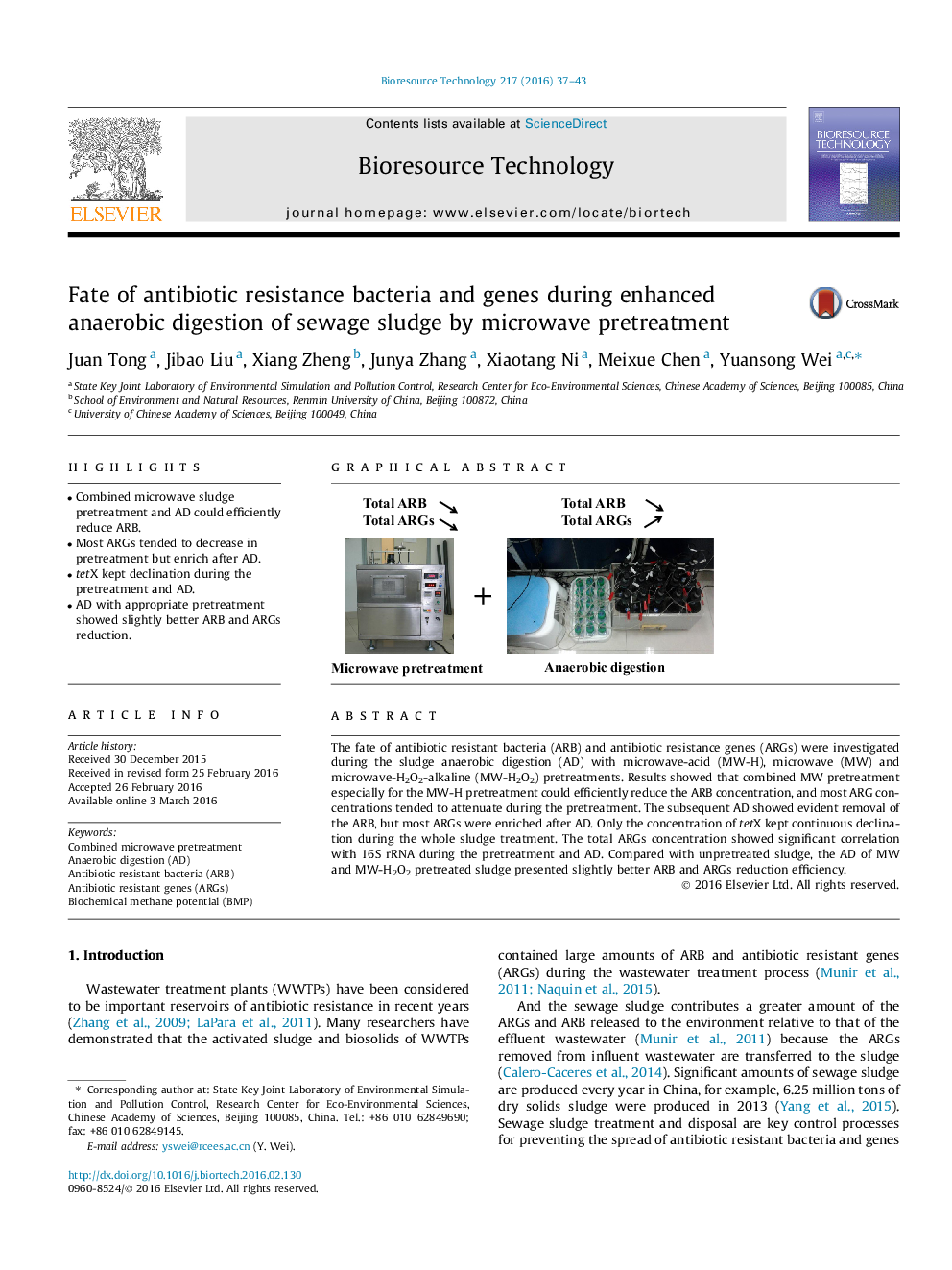| Article ID | Journal | Published Year | Pages | File Type |
|---|---|---|---|---|
| 679136 | Bioresource Technology | 2016 | 7 Pages |
•Combined microwave sludge pretreatment and AD could efficiently reduce ARB.•Most ARGs tended to decrease in pretreatment but enrich after AD.•tetX kept declination during the pretreatment and AD.•AD with appropriate pretreatment showed slightly better ARB and ARGs reduction.
The fate of antibiotic resistant bacteria (ARB) and antibiotic resistance genes (ARGs) were investigated during the sludge anaerobic digestion (AD) with microwave-acid (MW-H), microwave (MW) and microwave-H2O2-alkaline (MW-H2O2) pretreatments. Results showed that combined MW pretreatment especially for the MW-H pretreatment could efficiently reduce the ARB concentration, and most ARG concentrations tended to attenuate during the pretreatment. The subsequent AD showed evident removal of the ARB, but most ARGs were enriched after AD. Only the concentration of tetX kept continuous declination during the whole sludge treatment. The total ARGs concentration showed significant correlation with 16S rRNA during the pretreatment and AD. Compared with unpretreated sludge, the AD of MW and MW-H2O2 pretreated sludge presented slightly better ARB and ARGs reduction efficiency.
Graphical abstractFigure optionsDownload full-size imageDownload as PowerPoint slide
